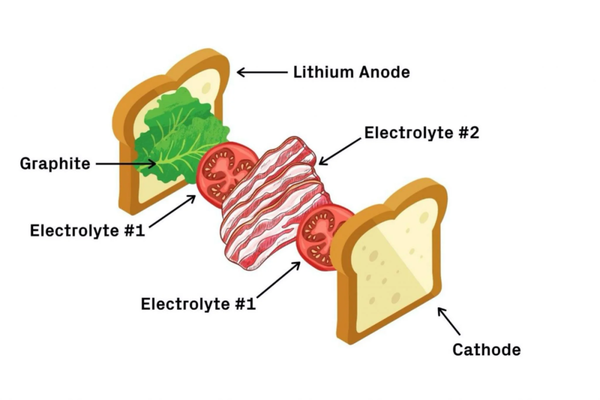Startup Adden Energy was founded in 2021 by Harvard associate professor Li Xin, and Harvard doctoral students William Fitzhugh and Luhan Ye, all of whom were involved in the development of the lithium-ion battery technology. It is worth mentioning that Fred Hu, founder and chairman of Primavera Capital, is also one of the founders of Adden Energy.
According to Adden Energy, this self-developed lithium metal battery has a service life of more than 10,000 cycles, and the battery prototype has high energy density and material stability, and overcomes some safety issues of lithium batteries. The research paper was published in "Nature".
Adden Energy plans to first develop the battery into a palm-sized pouch cell and then turn it into a full-fledged car battery over the next three to five years.
Adden Energy CEO Fitzhugh pointed out that in 2019, 29% of carbon dioxide emissions in the United States came from transportation. The development of electric vehicles is one of the most meaningful ways to combat climate change. However, widespread adoption of electric vehicles requires a large number of batteries to meet the various needs of consumers. This brings new problems, for example, 37% of American households do not have a garage, so it is impossible to charge the car for a long time. To electrify this sector, electric vehicles need to be charged in a time comparable to a car with an internal combustion engine, basically the time spent at a gas station.
The biggest challenge for lithium metal batteries has always been the chemistry. Lithium batteries move lithium ions from the cathode to the anode during charging. When the anode is made of lithium metal, needle-like structures called dendrites form on the surface. These structures grow in the electrolyte and puncture the barrier separating the anode and cathode, causing the battery to short out and even catch fire.
To overcome this challenge, the Harvard research team designed a multilayer battery that sandwiched different materials of varying stabilities between the anode and cathode. They stopped the dendrites from growing before they caused damage through novel structural and material designs. Therefore, the device can maintain its high performance over a long service life.
How the battery is designed We can think of the battery as a sandwich. First came the bread: the lithium metal anode, then the lettuce: the graphite coating, next, a layer of tomatoes: the first electrolyte and a layer of bacon: the second electrolyte. Use another layer of tomatoes and the last piece of bread as a cathode.

The first electrolyte (chemical name Li_5.5PS_4.5Cl_1.5 or LPSCI) is more stable to lithium but prone to dendrite penetration. The second electrolyte (Li_10Ge_1P_2S_12 or LGPS) is less stable to lithium but not affected by dendrites. In this design, dendrites can grow through the graphite and the first electrolyte, but stop growing when they reach the second electrolyte. In other words, dendrites grow in lettuce and tomato, but stop in bacon. The Bacon barrier prevents dendrites from passing through the cell.
Li Xin said: "If you want to electrify your car, solid-state batteries are the way to go. We are starting to commercialize this technology because we believe this technology is unique compared to other solid-state batteries. We have already In laboratory conditions, the battery has achieved 5000 to 10000 charge cycles over its lifetime, and the best battery in its class can only achieve 2000 to 3000 charge cycles. And our battery technology does not scale in terms of Any fundamental restrictions. This could change the entire battery industry.”

